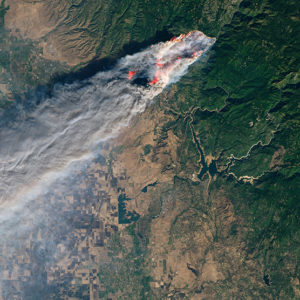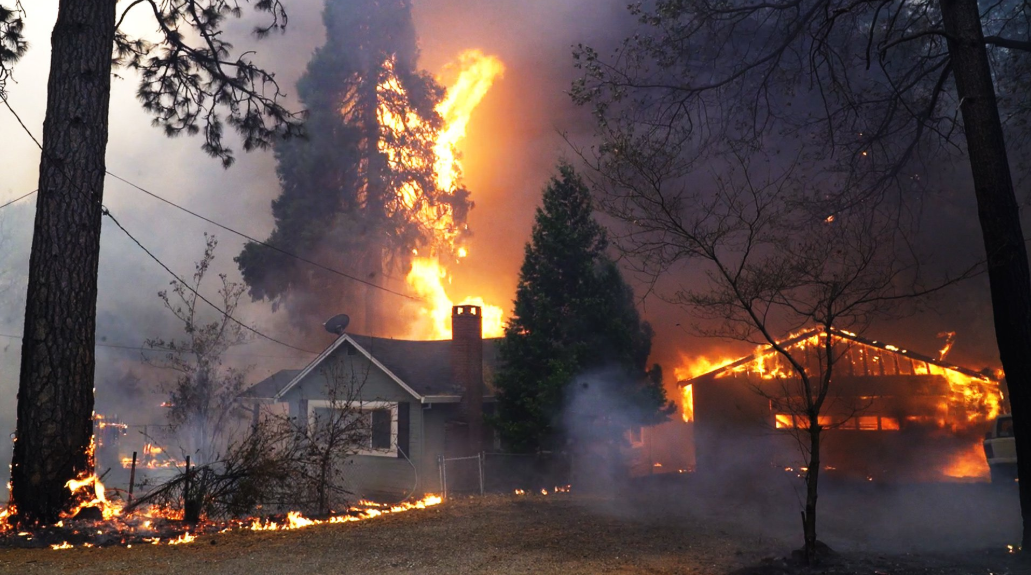A recent PBS documentary that aired in early May 2019 details accounts of California residents that fled for their lives during the 2018 fire season. It also extensively looks into extreme wildfire behavior, exploring how forestry practices, climate change, and physics play a role in fire activity.
The Camp Fire and How Megafires Spread
November 8th 2018 marks the start of the United States’ deadliest fire in history. Flames were fierce and difficult to access as first responders arrived on scene. Within two days, the Camp Fire erupted with little warning to evacuate small forest towns like Pulga, Concow, Paradise, and Magalia. The documentary provides footage and tragic stories of families attempting to flee, leaving their homes behind. Ultimately, the fire burned about 100,000 acres, destroyed at least 19,000 structures, and took 88 lives.
The documentary also details major causes of the Camp Fire’s rapid spread including many overwhelming spot fires and gusts of wind over 50 mph. High temperatures and radiant energy caused unburned fuel to preheat faster. This made the fuel ignite easily when wind taken fiery embers flew from the fire front. Spot fires make it very hard to forecast wildfire’s next move and also very dangerous for firefighters to operate. The documentary dives into new methods meteorologists use to measure fire spread on active fires. The meteorologist used a lidar tool on the Camp Fire to measure the main plume’s speed and direction.
The Missoula Fire Science Lab under the USDA Forest Service also pushes to understand extreme wild fire physics. The film shows lab simulations that aim to mimic extreme fire behavior, including firewhirls and wide plumes with ground winds.

NASA aerial view of the Camp Fire’s smoke plume.
Natural Cycle and History of Human Response to Fire
Fire is key to the natural earth cycle that replenishes the ground’s soils, allowing healthier, stronger life to grow. While wildfires have continuously hit the US throughout history, the documentary compares previous fires and forestry strategies to recent fire behavior and human impact.
1910: The Great Fire of 1910 shocked firefighters as spot fires across states turned into millions of acres raging through Idaho and Montana. This left 78 firefighters dead, changing forest fire policy and management forever.
1935:
The Forest Service established the 10 AM policy, which encouraged a suppression approach to fighting fires. It directed that every fire should be suppressed by 10 AM, the following day of its initial report. This excluded natural wildfires from taking their course.
1970: It was not until the late 1960s and early 1970s that scientists discovered the positive role wildfires play in a forest’s natural cycle. This dramatically changed wildfire management strategies, leading to more “let-burn” policies.
1980 to today: Fire agencies now have to consider the human caused wildland-urban interface when letting the nature cycle of wildfire occur. The documentary also calls out climate change as a contributor to intense wildfire behavior.
What’s Next?
Scientists and forest service teams are working towards land restoration, forest thinning, and prescribed burns to help control large wildfire impact. Nevertheless, fires are becoming more frequent and destructive within the US and worldwide. The forest today is burning ten times the amount in 1970. Agencies no longer just expect work during “fire season”, but prepare for fires year round. The documentary is a great overview of the impact of our changing environment on the large wildfires we see today.
Sources: PBS, USDA, and Forest History Society




